#Revit Modeling Outsourcing
Explore tagged Tumblr posts
Text
Top MEP BIM Services in the USA: A Comprehensive Guide

From design to execution, BIM has revolutionized the AEC industry, especially in the complex realm of MEP systems. With precision-driven 3D modeling, clash detection, energy analysis, and seamless collaboration, MEP BIM ensures smarter, faster, and more efficient construction. Explore the top MEP BIM service providers in the USA and how they’re shaping the future of construction with innovation and accuracy.
#mep bim services#mep coordination#mep coordination services#mep bim modeling services#mep drafting services#mep coordination process#bim mep coordination#mep modeling services#revit mep services#mep 3d modeling#bim mep services#mep bim outsourcing
2 notes
·
View notes
Text
Best Architectural 3D Revit Modeling Services at Affordable Price
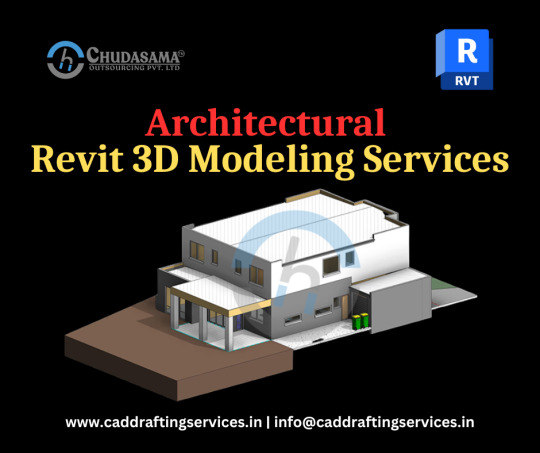
Chudasama Outsourcing is a leading Architectural BIM company that provides high standards of services and quality. We provide high-quality 3D Revit Modeling Services at an affordable price. We take great pride in being able to produce excellent quality Revit modeling services to our clients overseas. Our clients are located in the USA, UK, Canada, New Zealand, Australia, and UAE, etc. We provide services like Architectural, Structural, MEPF, Shop Drawings, and as-built Drawings in Revit. If you want to outsource any such services, then contact us at [email protected]
#revit modeling services#3d revit modeling services#architectural revit modeling#architectural revit modeling services#3d architectural revit modeling#outsource revit modeling services#bim modeling services#architectural#revit#building information modeling
3 notes
·
View notes
Text
Top 7 Reasons to Outsource Revit Modeling Services in 2025
As the architecture, engineering, and construction (AEC) industry continues to evolve, the reliance on advanced design tools like Revit is reshaping how professionals approach projects. Whether you’re an architect working on a complex building design, a construction firm managing tight project timelines, or a real estate developer striving to visualize your next big investment, Revit modeling can…
0 notes
Text
How Scan to BIM is Revolutionizing Renovation and Restoration Projects

The construction industry is undergoing a significant transformation, thanks to digital technologies that streamline processes, enhance efficiency, and improve project outcomes. One such innovation making waves in renovation and restoration projects is Scan to BIM (Building Information Modeling). This technology is changing how professionals approach old and damaged structures, ensuring accuracy, reducing risks, and saving time and costs. Let��s explore how Scan to BIM is revolutionizing renovation and restoration projects and why it has become a game-changer for architects, engineers, and contractors.
Understanding Scan to BIM
Scan to BIM is a process that involves capturing the physical attributes of a building using 3D laser scanning technology. The collected data, known as a point cloud, is then converted into a detailed Building Information Model (BIM). This digital representation provides accurate and comprehensive information about the building’s existing conditions, which is crucial for planning renovations and restorations.
The Scan to BIM process typically involves the following steps:
Laser Scanning – High-precision 3D laser scanners capture the existing structure’s dimensions, generating a dense point cloud.
Data Processing – The point cloud data is processed and converted into a usable format for BIM software.
BIM Modeling – The data is then used to create a detailed BIM model, which includes structural, architectural, and MEP (Mechanical, Electrical, and Plumbing) components.
Analysis and Planning – The BIM model serves as the foundation for analysis, renovation planning, and design development.
By leveraging Scan to BIM, professionals gain valuable insights into a building’s current state, enabling them to make informed decisions about renovations and restorations.
The Benefits of Scan to BIM in Renovation and Restoration
1. Accurate As-Built Documentation
One of the biggest challenges in renovation and restoration projects is the lack of accurate as-built drawings. Many older buildings may not have detailed blueprints or existing documentation may be outdated. Scan to BIM eliminates these issues by providing highly accurate digital documentation, ensuring that project teams work with precise measurements and conditions.
2. Improved Project Efficiency
Traditional surveying methods can be time-consuming and prone to human errors. With Scan to BIM, laser scanning captures millions of data points in minutes, significantly reducing the time required for site surveys. The automated nature of the process minimizes manual errors, ensuring that professionals have reliable data from the start.
3. Cost Savings
Errors and rework can be costly in renovation and restoration projects. By using Scan to BIM, project teams can identify potential issues early, reducing costly surprises and minimizing delays. Additionally, the accurate data provided by Scan to BIM helps optimize material usage, preventing unnecessary expenses.
4. Enhanced Collaboration and Communication
BIM models created from scan data provide a centralized digital representation of a building, which enhances collaboration among stakeholders. Architects, engineers, and contractors can work with the same detailed model, improving communication and coordination. This reduces misunderstandings and ensures that renovation plans are aligned with the existing structure.
5. Risk Reduction and Safety Improvements
Renovation and restoration projects often involve working with deteriorated structures, which can pose safety risks. Scan to BIM allows professionals to assess the condition of the building remotely, identifying structural weaknesses before starting physical work. This helps create safer work environments and reduces the likelihood of accidents.
6. Sustainability and Adaptive Reuse
Scan to BIM plays a crucial role in sustainable renovation practices. By accurately assessing existing structures, professionals can develop strategies for adaptive reuse rather than demolition. This reduces construction waste and supports environmentally friendly building practices.
Applications of Scan to BIM in Renovation and Restoration
Historic Building Preservation
Preserving historic buildings requires a delicate balance between maintaining original architectural features and modernizing infrastructure. Scan to BIM helps conservationists and architects document intricate details, ensuring that restoration efforts align with historical accuracy while incorporating necessary upgrades.
Structural Renovations
For buildings undergoing structural modifications, Scan to BIM provides engineers with detailed insights into load-bearing elements, foundation conditions, and potential weaknesses. This information is essential for reinforcing structures while maintaining safety and integrity.
MEP System Upgrades
Renovating mechanical, electrical, and plumbing systems in older buildings can be complex due to unknown existing conditions. Scan to BIM simplifies this process by providing accurate spatial data, allowing engineers to design efficient MEP systems without costly guesswork.
Commercial and Residential Retrofits
Whether updating office spaces, retail outlets, or residential properties, Scan to BIM ensures that renovation projects align with existing structures. This is particularly useful for integrating smart building technologies, energy-efficient systems, and modern design elements into older buildings.
The Future of Scan to BIM in Renovation
As technology continues to evolve, the future of Scan to BIM looks promising. Advancements in artificial intelligence (AI) and automation are expected to further enhance the efficiency of the Scan to BIM process, making it even more accessible and cost-effective. Additionally, integration with augmented reality (AR) and virtual reality (VR) will enable professionals to visualize renovation plans in immersive 3D environments before implementation.
Moreover, as sustainability and carbon footprint reduction become priorities in the construction industry, Scan to BIM will play a vital role in promoting adaptive reuse and minimizing construction waste.
Conclusion
Scan to BIM is transforming how renovation and restoration projects are executed, providing unmatched accuracy, efficiency, and cost savings. By enabling professionals to work with precise as-built documentation, improve collaboration, and enhance safety, this technology is proving to be a game-changer in the industry. As its adoption continues to grow, Scan to BIM will undoubtedly shape the future of renovation and restoration, ensuring that old and damaged structures can be revitalized with greater ease and precision.
#digital technologies#Scan to BIM#renovation#restoration#architects#engineers#BIM modeling#bim outsourcing services#revit modeling services#bim modeling services#bim modelling services#3d bim modeling services#outsource bim services#bim outsourcing#bim services provider#bim modeling service#outsourcing bim
0 notes
Text
Affordable Architectural Services in Birmingham, UK.
Silicon EC UK Limited where we turn dreams into reality through innovative Architectural CAD Drawing Services United Kingdom. With years of experience and a passion for creativity, we are committed to delivering exceptional architectural solutions tailored to meet our clients' unique needs. We work closely with our client from the initial brainstorming session to the final delivery, the project head oversaw the entire process from inception to completion.

Visit Us Our Website :
#Architectural CAD Drawing Services United Kingdom#Architectural Site Plan London#Architecture Shop Drawing Liverpool#Architecture Interior Work UK#Architecture Landscape London#Architecture Visualization London#CAD Interior Designers United Kingdom#Architectural CAD Design United Kingdom#2D CAD Services UK#CAD Construction Services UK#Architectural Engineering Services#Architectural CAD Design Services#Architectural 3D Modeling Services#Architectural Engineering Company#Outsource Architectural CAD Services#Architectural CAD Drafting Services#Architectural Interior Design Services#Architectural Design and Drawing Services#Architectural Landscape Planning Services#Revit Architecture Services#Revit Architectural Engineering Services#2D Architectural Design and Drafting Services
0 notes
Text
We are committed to offering our Revit Content Creation services and VDC (Virtual design construction) services leading to efficient, sustained, and growth-oriented development to help our clients.
#3d modeling services#bim outsourcing companies in india#bim outsourcing services#bim services#virtual design construction services#bim services provider#architectural design#scan to bim#scan to revit
0 notes
Text
5 Ways Structural And MEP Engineers Can Benefit From Autodesk Revit Modeling Outsourcing Services in 2023
Outsourcing Revit Modeling services from experienced BIM providers like The AEC Associates has become a norm rather than an exception for enabling architects to design more creative, functional structures and execute projects flawlessly. Architects can derive multiple benefits from Revit Modeling services outsourcing since it has proved more efficient and effective than the traditional way of getting the work done by an organization’s in-house teams.

What is BIM (Revit) Modeling?
BIM modeling is the creation of a digital representation of a building or infrastructure project using Building Information Modeling (BIM) software - Autodesk Revit. It involves constructing a detailed 3D model that encompasses architectural, structural, and MEP (mechanical, electrical, and plumbing) elements. BIM modeling facilitates collaborative design, analysis, and documentation, enabling stakeholders to visualize and coordinate various aspects of the project. The model contains rich information about the project, including geometry, material properties, quantities, and project data, fostering efficient decision-making and reducing errors during construction.
What are the benefits of outsourcing Revit Architectural modeling services:
You don’t have to invest in buying or upgrading equipment and infrastructure
You are saving expenses on training the in-house teams to work with complex BIM software
You will need smaller office space and less number of permanent employees, thus able to reduce operational costs. You will also save expenses on employee perks and benefits
You are spared the trouble of hiring and firing as per project requirements
BIM modeling services ensure top quality and always complete projects within time.
Why do structural and MEP services hold great importance:
Several components influence the outcome of a construction project: architectural, structural, MEP (mechanical, electrical, and plumbing), and fire protection. Good coordination and collaboration among all teams is necessary for conflict-free design and efficient and quick execution. The role of structural and MEP (along with fire protection FP) services is just as important as the architectural aspect of the project.
Main Architecture BIM outsourcing services structural and MEP-FP engineers can benefit from:
Constructability review
One can effectively use Revit Modeling services outsourcing to independently review construction plans. This also includes the specifications through virtual construction of structural and MEP design. You can conveniently identify the discrepancies in structural/ MEP/ FP drawings and possible issues during the pre-construction stage itself through the constructability review. The review investigates the following:
Documents and information that are missing
Inconsistencies made during input
Conflicting data
Is there a lack of ease of access and clearance is inadequate
How feasible is the support system
Better coordination and clash detection
Revit (BIM) Modeling Services create coordinated BIM structural/ MEP models to effectively check possible interference amongst all building systems. Construction professionals can thus visualize the whole building system before construction begins. 3D BIM structural-MEP clash coordination helps you reduce rework during the construction stage which saves time and money. The process allows you to resolve clashes among structural, mechanical, electrical, plumbing, and fire protection services, and similarly, MEP-FP and architectural and structural services.
As-built plans
As-built drawings are important for structural and MEP engineers since they provide an exact picture of the existing structure and all the elements with their locations. BIM providers enable service engineers to find flaws and conflicting elements by converting these drawings into structural-MEP-FP as-built models. Different teams can thus make a well-coordinated effort to make architectural, structural, mechanical, electrical, plumbing, and fire protection fixtures independent of each other. As a result, the overall construction work also becomes better coordinated and flawless.
Efficient SMEP scheduling
Working with Revit BIM modeling outsourcing services helps structural and MEP engineers by converting 2D technical drawings into 3D SMEP modeling. You can thus achieve greater visualization and coordination. BIM providers also enable you to generate detailed structural shop drawings for accuracy and precision. The documentation and modeling process is aimed at coordinating well with the SMEP design process. This allows you to develop complex components for HVAC, electrical, water supply, sanitary and drainage systems, and fire protection systems to produce a high-performing, safe structure.
Cost estimation and construction scheduling
The coordinated structural-MEP BIM models are used by BIM providers for generating quantity take-offs, construction scheduling (4D BIM), and cost estimation (5D BIM). You avoid wastage of time, money, and resources, as a result, making the whole process effective and efficient. It becomes possible to complete your projects within the projected budget and timeline.
You can employ Revit Modeling services outsourcing since it offers multiple benefits to structural and MEP engineers. Services like energy analysis, performance monitoring, and clash identification will help you execute your projects well by ensuring good coordination among different teams like architectural, structural, MEP, and fire protection.
#architectural bim modeling services#revit outsourcing services#bim modeling services#architecture#construction documentation services#bim services#bim#building information modeling#3d bim modelling#architectural cad drafting#3d revit bim modeling services#revitstructuralmodelingservices#revitbimservices#revit modeling services#revit#construction
0 notes
Text
Architectural 2D CAD Drafting & Design Services: Ensuring Precision and Quality
Architectural 2D CAD Drafting
Architectural 2D CAD drafting is the backbone of modern design workflows, offering precise and detailed technical drawings for projects of all scales. Whether it’s floor plans, elevations, or technical drawings, Architectural 2D CAD Drafting & Design Services ensure every detail is accurately represented, eliminating errors and streamlining construction processes.
With advanced tools like AutoCAD and Revit, these services allow architects, engineers, and contractors to work collaboratively, achieving precision and efficiency in their designs.
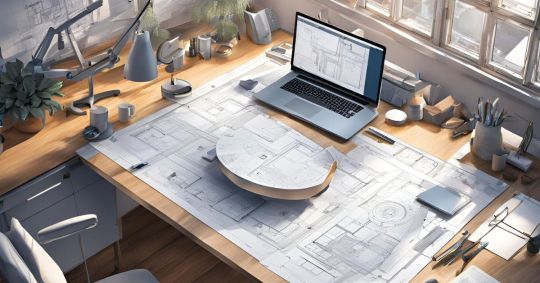
Importance of 2D CAD Drafting in Modern Architecture
2D CAD drafting services have become an integral part of architectural workflows, helping professionals overcome traditional design challenges. Here's why they are indispensable in modern architecture:
Precision: Every detail, from measurements to layouts, is highly accurate.
Collaboration: CAD files are easily shareable, ensuring all stakeholders are aligned.
Efficiency: Compared to manual drafting, CAD tools significantly reduce the time required to produce drawings.
By integrating 2D drafting and 3D BIM Modeling Services, architects and engineers can move seamlessly from conceptual design to execution while maintaining accuracy and consistency.
Benefits of 2D CAD Drafting for Professionals
For architects, engineers, and contractors, architectural 2D drafting offers numerous benefits, including:
Enhanced PrecisionAccurate drafting reduces errors during construction, ensuring smooth project execution.
Streamlined WorkflowWith 2D drafting and Architectural Design Visualization Services, teams can transition from design to documentation more effectively.
Cost EfficiencyOutsourcing 2D CAD drafting services reduces overhead costs, as there’s no need for maintaining an in-house drafting team.
Flexibility and ScalabilityProjects often require revisions and updates. CAD drafting ensures that modifications are quick and hassle-free without disrupting the entire workflow.
Professionals across industries leverage these benefits to optimize their design and construction processes.
Applications of 2D CAD Drafting
Architectural 2D drafting services have a wide range of applications in design and construction, including:
Floor Plans: Clearly defined layouts for residential, commercial, and industrial buildings.
Elevations: Detailed visual representations of exterior facades for presentations and approvals.
Technical Drawings: Accurate documentation that provides contractors and engineers with essential construction details.
To cater to complex design needs, Architectural CAD Design and Drafting Services provide tailored solutions for architects and engineers, enabling seamless integration of technical precision with creative concepts.
Industries Benefiting from 2D CAD Drafting
Several industries rely on architectural 2D CAD drafting services for achieving project success. Here’s a closer look:
ConstructionPrecise drafting reduces on-site errors, saving time and money during construction. Contractors depend on 2D drafting for creating accurate blueprints.
Interior DesignInterior designers use CAD drafting to create detailed layouts for furniture placement, lighting design, and more.
Real EstateReal estate developers benefit from professional drafting services to create detailed property layouts for presentations and marketing materials.
By relying on Architectural Documentation Services, these industries achieve precision, professionalism, and timely project delivery.
Leveraging Professional CAD Drafting Services
Outsourcing 2D CAD drafting services to experienced professionals can significantly optimize project outcomes. Here’s how:
Expertise: Professional drafters bring years of experience in handling complex drafting requirements.
Cost Savings: Avoid the expenses of maintaining in-house resources by outsourcing CAD drafting tasks.
Scalability: Services are tailored to meet specific project needs, ensuring flexibility and adaptability.
By leveraging Paper to CAD Conversion Services, architects, engineers, and contractors can focus on core project responsibilities while ensuring that designs are accurate and construction-ready.
Conclusion
Architectural 2D CAD drafting services are indispensable for achieving precision, efficiency, and collaboration in modern design projects. From floor plans to elevations and technical drawings, these services provide a solid foundation for successful project execution.
If you're looking to enhance your project outcomes with professional drafting services, get in touch today to see how we can help bring your vision to life.
2 notes
·
View notes
Text
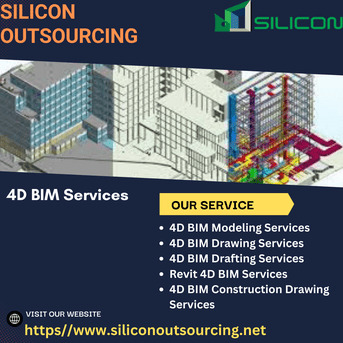
🚀 Transform Your Projects with Superior 4D BIM Services in NYC! 🏙️
At Silicon Outsourcing, we redefine construction planning with our cutting-edge 4D BIM Services. 🎯 From 4D Planning BIM to BIM Shop Drawings and 4D Modeling Services, we ensure seamless project coordination and scheduling. 📅✨
💡 Our expertise in Architectural BIM, Structural BIM, and Building Infrastructure Modeling helps you visualize every project phase while optimizing time and resources. ⏳💰
🌟 Why Choose Us? 🔹 Detailed 4D schedules & 3D modeling 📊 🔹 Enhanced resource management 🔄 🔹 Cost-effective & timely solutions ⏱️💸
📌 Our Services: 📐 4D BIM Modeling Services 🖊️ 4D BIM Drawing Services 📋 4D BIM Drafting Services 🛠️ Revit 4D BIM Services 🏗️ 4D BIM Construction Drawing Services
💬 Contact Us Today to bring innovation to your construction projects! Visit our website or email us for more details. 🌐✉️
Visit Our Website: https://www.siliconoutsourcing.net/cad-engineering-services/4d-bim-services.html
#4DBIMServices#4DBIMOutsourcing#BIMModelingServices#BIMShopDrawings#4DPlanningBIM#ArchitecturalBIM#StructuralBIM#BuildingInfrastructureModeling#4DCADServices#OutsourcingBIMServices
2 notes
·
View notes
Text
BIM Execution Plan Guide for Robust Strategies

BIM is a go to tool and requires accurate implementation in the construction project. With the help of a BIM execution plan, AEC professionals can strategize the process and get accurate outcomes. Here’s a detailed guide for robust strategies for BEP.
#BIM Modeling Services#3D BIM Modeling#Revit BIM Services#BIM Project Management#BIM Consulting Firm#Outsource BIM Services#3D Revit Modeling#3D Modeling Services#Architectural BIM Services#BIM Services in India#BIM Company India
2 notes
·
View notes
Text
Architectural BIM Services: Architectural Drafting & CAD Conversion
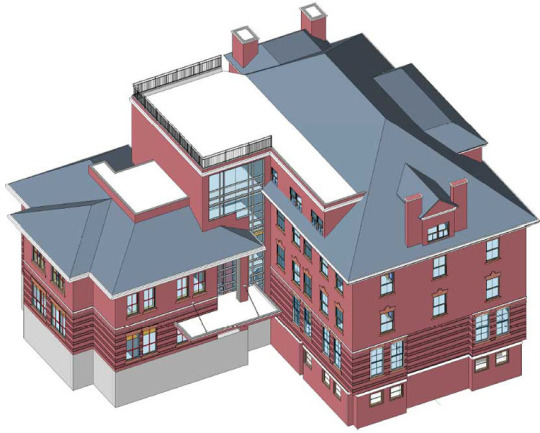
Architectural BIM services encompass a range of offerings aimed at enhancing architectural design processes. At Hitech BIM Services, we provide various architectural design services, from converting 2D AutoCAD floor plans into detailed 3D Revit BIM models, transforming CAD drawings into BIM execution plans, and developing full-scale rendered LOD (Level of Development) models following AIA standards, and integrating architectural, structural, and MEP designs to create clash-free models, etc.
Our architectural BIM services provide improved design communication, enhanced coordination with engineers and contractors, and develop comprehensive architectural building designs from existing 2D drafts and CAD models.
As experienced providers of outsourcing BIM architectural services, our team of professional designers excels in BIM platforms and delivers 3D models that meet specific design standards. Partnering with us ensures sustainable building designs, efficient architectural solutions, and precise technical documentation throughout the project lifecycle.
#architecture#building#bim#architectural design#architectural bim services#architectural 3d modeling#outsourcing
3 notes
·
View notes
Text
What is BIM Architectural outsourcing & Drafting Services?
BIM Architectural Services refer to the practice of subcontracting architectural design and drafting tasks to external firms or professionals specializing in Building Information Modeling (BIM). In this arrangement, architectural firms or companies outsource certain aspects of their projects, such as creating detailed drawings, 3D modeling, or BIM coordination, to specialized service providers.
Outsourcing BIM architectural drafting services offers several benefits to architectural firms:
Cost Efficiency: Outsourcing allows firms to access skilled professionals at a lower cost compared to hiring in-house staff. This can result in significant cost savings, especially for projects with fluctuating workloads or specialized requirements.
Expertise and Specialization: BIM outsourcing firms often have a team of experienced professionals with expertise in architectural drafting and BIM technologies. By leveraging their specialized skills, architectural firms can ensure high-quality deliverables and efficient project execution.
Focus on Core Competencies: Outsourcing non-core tasks such as drafting allows architectural firms to focus on their core competencies, such as design creativity, client relationships, and project management. This can lead to improved productivity and better utilization of resources.
Scalability and Flexibility: Outsourcing provides architectural firms with the flexibility to scale their workforce up or down based on project requirements. This agility enables firms to handle peak workloads, meet tight deadlines, and adapt to changing market demands more effectively.
Access to Advanced Technologies: BIM outsourcing firms often invest in the latest BIM software and technologies to deliver innovative solutions to their clients. By partnering with these firms, architectural companies can leverage cutting-edge tools and workflows without investing in expensive software licenses or training.
Overall, BIM architectural outsourcing and drafting services enable architectural firms to enhance their competitiveness, improve project efficiency, and deliver high-quality designs to their clients. By partnering with experienced outsourcing providers, architectural firms can streamline their workflows, reduce overhead costs, and focus on delivering exceptional architectural solutions.
United-BIM Inc. is a certified SBE/MBE BIM Modeling Services Company based in East Hartford, Connecticut. Our services include BIM Architectural Services, Architectural Drafting Services, 3D Rendering Services Structural Modeling and Detailing (Rebar, Precast, others), MEP-FP Modeling and Detailing, BIM Coordination & Clash Detection Services, Revit Family Creation Services, Underground Utility Locating Services, On-site & off-site Coordination Services, Onsite & virtual meetings participation, Point Cloud Scan to BIM, CAD to BIM Services, BIM for Facility Management, Accurate Shop Drawings Creation, As-built Drawings Services, Electrical Design Services & more.
1 note
·
View note
Text
Why Manufacturers Need CAD Drafting for Efficient Product Design

In today's highly competitive manufacturing industry, efficiency and precision are key factors determining product development's success. As manufacturers strive to deliver innovative and cost-effective solutions, the importance of CAD (Computer-Aided Design) drafting in achieving efficient product design cannot be overstated. CAD drafting offers a digital approach to creating, modifying, and optimizing product designs, making it an indispensable tool for manufacturers worldwide.
This blog explores why CAD drafting is essential for manufacturers aiming to streamline their design processes, improve accuracy, and enhance collaboration.
1. Streamlining the Product Design Process
CAD drafting automates many aspects of the product design process, allowing manufacturers to create detailed, accurate designs faster than traditional drafting methods.
Key Benefits:
Quick Prototyping: CAD tools enable the rapid creation of design prototypes, reducing the time required to move from concept to final design.
Reuse of Templates: Manufacturers can save and reuse CAD templates for recurring designs, ensuring consistency and saving time.
Design Iterations: CAD software facilitates multiple design iterations with minimal effort, enabling manufacturers to explore different options before finalizing the best one.
Efficient design workflows powered by CAD drafting result in reduced production timelines and faster time-to-market for products.
2. Improved Accuracy and Reduced Errors
Manual drafting methods are prone to errors that can lead to costly revisions and delays. CAD drafting eliminates many of these risks by offering tools for precise measurements and error detection.
How CAD Drafting Enhances Accuracy:
Error Detection Tools: Advanced CAD software can identify design inconsistencies, ensuring products meet specifications.
Realistic 3D Modeling: CAD drafting allows designers to visualize and analyze products in 3D, catching potential flaws before production begins.
Seamless Adjustments: Measurements and dimensions can be adjusted automatically, reducing human error in calculations.
By minimizing errors early in the design process, manufacturers save both time and money.
3. Enhanced Collaboration Among Teams
Product design often involves collaboration among engineers, designers, and project managers. CAD drafting facilitates seamless communication by creating a common platform where all stakeholders can review and edit designs in real time.
Collaboration Features in CAD Drafting:
Cloud-Based Access: Many CAD platforms offer cloud integration, allowing team members to access designs from anywhere.
Version Control: CAD software tracks design changes, ensuring that everyone works on the latest version.
Integrated Feedback Tools: Stakeholders can leave comments directly on the design files, simplifying the feedback process.
Effective collaboration through CAD drafting enhances teamwork and reduces the risk of miscommunication.
4. Cost-Efficiency in Product Development
Cost control is a critical aspect of manufacturing. CAD drafting helps manufacturers optimize their budgets by reducing material waste and preventing costly design errors.
Ways CAD Drafting Saves Costs:
Material Optimization: CAD tools allow for precise calculations of material requirements, minimizing waste during production.
Simulation and Testing: Designs can be simulated in virtual environments to test performance, reducing the need for physical prototypes.
Reduced Revisions: Accurate CAD drafting minimizes the need for expensive rework and redesigns.
These cost-saving benefits make CAD drafting an invaluable investment for manufacturers looking to maximize their ROI.
5. Facilitating Compliance with Industry Standards
Manufacturers must adhere to strict industry standards and regulations when designing products. CAD drafting simplifies this process by incorporating compliance features directly into the software.
Compliance Made Easy:
Standardized Libraries: CAD platforms often include pre-built libraries of industry-standard components and templates.
Automated Documentation: Detailed design documentation generated by CAD software ensures compliance with regulatory requirements.
Design Validation: CAD drafting tools can validate designs against specific standards, identifying potential non-compliance issues early.
This ensures that manufacturers can produce high-quality products that meet industry requirements without additional hassle.
6. Flexibility in Design Customization
Customization is a growing trend in manufacturing, as consumers demand products tailored to their specific needs. CAD drafting empowers manufacturers to create customized designs efficiently.
Custom Design Advantages:
Parametric Modeling: CAD software allows designers to adjust parameters, making it easy to customize product dimensions and features.
Personalized Prototypes: Customized prototypes can be created quickly to meet unique client requirements.
Scalability: Designs can be scaled up or down to fit different product specifications without starting from scratch.
This flexibility enables manufacturers to cater to diverse markets and enhance customer satisfaction.
7. Improved Visualization with 3D Models
Unlike traditional 2D drafting, CAD drafting offers advanced visualization through 3D modeling. This feature is particularly beneficial for manufacturers looking to create complex or intricate product designs.
Visualization Benefits:
Realistic Renderings: High-quality 3D renderings give stakeholders a clear idea of what the final product will look like.
Enhanced Presentations: Manufacturers can use 3D models in presentations and marketing materials to attract clients and investors.
Virtual Prototyping: 3D models can be used to test assembly processes and product functionality before production.
Enhanced visualization improves decision-making and reduces uncertainty in the design process.
8. Seamless Integration with Manufacturing Technologies
Modern manufacturing relies heavily on technologies like CNC machining and 3D printing, both of which require precise CAD files for operation.
CAD Drafting Integration Benefits:
CNC Compatibility: CAD designs can be directly converted into machine-readable formats for CNC machines.
3D Printing: CAD drafting enables the creation of detailed 3D models optimized for additive manufacturing.
Digital Twin Creation: CAD tools can create digital twins of products, enabling manufacturers to monitor and improve performance in real-time.
By integrating seamlessly with these technologies, CAD drafting bridges the gap between design and production.
9. Scalability for Future Projects
As manufacturers grow, their design needs evolve. CAD drafting offers scalability, allowing companies to handle increasing design complexity without compromising efficiency.
How CAD Drafting Supports Growth:
Advanced Features: CAD software evolves with updates, offering new features to meet changing industry demands.
Data Management: Large-scale projects can be managed effectively with robust data organization tools in CAD platforms.
Cross-Industry Applications: CAD drafting can be adapted for use in various industries, from automotive to aerospace, ensuring long-term relevance.
This scalability ensures that manufacturers are always prepared to meet future challenges.
Conclusion
CAD drafting has become an essential tool for manufacturers aiming to achieve efficient product design. By streamlining workflows, improving accuracy, and facilitating collaboration, CAD drafting enables manufacturers to stay competitive in a rapidly evolving market. Its ability to reduce costs, enhance customization, and integrate with modern manufacturing technologies makes it a must-have for any organization looking to optimize its product development process.
If you’re a manufacturer seeking to take your product design capabilities to the next level, adopting CAD drafting is a step in the right direction. Invest in this transformative technology today to unlock new levels of efficiency and innovation.
Boost Your Manufacturing Efficiency with CAD Drafting Services!At ProtoTech Solutions, we specialize in providing CAD drafting services tailored to meet the unique needs of manufacturers. Contact us today to learn how our experts can help streamline your product design process!
#cad drafting services#outsource cad drafting services#cad design services#outsource drafting services#cad outsourcing#cad services#cad outsourcing services#cad design and drafting services#cad drawing services#drafting services in india#cad service provider#outsourced cad services#drafting service in india#outsource autocad drafting#cad drafting outsourcing services#cad services india#outsource cad services#outsource cad services to india#autodesk outsourcing#architectural cad drafting services#3d cad drafting services#cad drafting outsource#outsource cad drafting#cad drafting service#revit drafting services#autocad drafting outsourcing#cad modeling outsourcing#cad services provider#autocad design outsourcing#outsource cad design
0 notes
Text
Get the Top Structural CAD and BIM Services in Birmingham, UK

Silicon EC UK Limited offers comprehensive Structural CAD and BIM Services in Birmingham, UK, catering to a diverse range of clients across various AEC industries. Our engineering team of skilled professionals utilizes the latest CAD and BIM technologies to deliver precise and efficient structural designs, ensuring optimal functionality, safety, and sustainability of the built environment. Our collaborative approach allows us to seamlessly integrate with your existing workflow, providing timely deliverables and fostering seamless communication throughout the structured project lifecycle.
By choosing Silicon EC UK Limited for your Structural CAD and BIM requirements in Birmingham, UK, you can expect superior quality, timely delivery, and exceptional service that aligns with your project goals and objectives. Contact us today to discuss your project needs and let us be your trusted partner in transforming visions into reality.
For More Details Visit our Website:
#Structural CAD & BIM Service#Structural Design#Structural 2D and 3D Designing#Structural Plan#Structural Engineering Services#Structural Engineering CAD Design Services#Structural Engineering Consultant#Outsource Structural Engineering Firm Birmingham#Structural Engineering Company#Structural BIM Modeling Services#Structural BIM Services#Structural Steel Detailing Services#Structural Modeling Services#Revit Structural Design Services#Building Structural Design Services#Structural Engineering Company Birmingham#Structural Engineering Firm Birmingham#Structural CAD and BIM Services Birmingham#CAD Design#CAD Drafting#CAD Drawing#CAD Services#Engineering Services
0 notes
Text
Understanding BIM Outsourcing: Challenges, Benefits, and Strategies

Building Information Modeling (BIM) outsourcing has become an essential practice in the architectural, engineering, and construction (AEC) industry in the United States. With the rapid adoption of digital workflows and increasing project complexity, firms are seeking more efficient ways to handle BIM-related tasks. Outsourcing BIM services allows firms to access specialized expertise, reduce operational costs, and improve project turnaround times. However, despite its many advantages, outsourcing also comes with certain challenges that firms must address to ensure seamless project execution.
In this detailed guide, we will explore BIM outsourcing in depth, discussing its significance, advantages, potential obstacles, and strategies to optimize the outsourcing process for maximum efficiency and success.
What is BIM Outsourcing?
BIM outsourcing refers to the practice of delegating BIM-related tasks to external service providers. These tasks can range from 3D modeling and clash detection to construction documentation, coordination, cost estimation, and visualization. Companies may choose to outsource BIM services either to domestic firms within the United States or to international providers offering cost-effective solutions.
Outsourcing is particularly beneficial for AEC firms that do not have an in-house BIM team or need additional support to meet project deadlines. By outsourcing, firms can leverage external expertise, advanced software tools, and scalable resources without the need for significant internal investment.
Key BIM Outsourcing Services in USA?
BIM outsourcing companies provide important services that help architectural, engineering, and construction (AEC) firms complete their projects smoothly and efficiently. These services help reduce costs, improve collaboration, and speed up the design and construction process. Here’s a breakdown of the most common BIM services offered:
3D BIM Modeling Clash Detection and Coordination Scan to BIM (Point Cloud to BIM) BIM for Facility Management BIM 4D & 5D Simulation BIM Documentation and Drafting MEP BIM Services Structural BIM Services
Outsourcing BIM in the USA for Architectural, Engineering, and Construction Firms
Building Information Modeling (BIM) has revolutionized the architecture, engineering, and construction (AEC) industries by improving collaboration, reducing errors, and streamlining workflows. However, managing an in-house BIM team requires significant investment in software, infrastructure, and skilled personnel. This has led many firms across the AEC spectrum to consider outsourcing BIM services as a cost-effective and efficient solution.
Why Architectural Firm in USA Should Outsource BIM?
Architectural firms are primarily concerned with design innovation and functionality. While BIM plays a crucial role in project execution, maintaining an in-house team with the necessary expertise can be expensive and time-consuming. By outsourcing Architectural BIM services, architectural firms can focus on conceptual design and client interactions while ensuring that their projects benefit from high-quality BIM modeling and documentation. Outsourcing allows firms to leverage a team of experienced BIM professionals who specialize in using advanced tools like Autodesk Revit, Navisworks, and BIM 360. These experts not only enhance design coordination but also help identify potential conflicts early, improving project accuracy and efficiency.
Commonly outsourced BIM services for architects include 3D BIM modeling, where both conceptual and detailed models are created to aid in design development and visualization. Comprehensive BIM documentation is also provided, including detailed plans, elevations, and sections, which are necessary for securing permits and facilitating construction. Revit family creation services is another key service, where tailored components are developed and standardized for consistency across designs. Clash detection helps identify and resolve conflicts between architectural, structural, and MEP elements, ensuring smoother integration of all systems. Lastly, scan to BIM services are offered for renovations and historical preservation projects, converting physical structures into accurate digital models for future planning and management.

Why Engineering Firms in USA Should Outsource BIM?
Engineering firms, whether focusing on structural, mechanical, electrical, or plumbing (MEP) systems, require accurate BIM models to validate designs and ensure system integration. Outsourcing BIM allows these firms to concentrate on their core competencies while utilizing specialized BIM teams skilled in compliance, coordination, and clash detection. Outsourcing also facilitates advanced simulations, such as energy analysis and structural integrity assessments, which help engineers optimize their designs, ensure compliance with codes, and minimize rework during the construction phase.
Commonly outsourced BIM services for engineers include structural BIM modeling, where steel, concrete, and wood structures are modeled to validate design integrity and support construction. MEP BIM modeling ensures optimal coordination and efficiency for HVAC, electrical, and plumbing systems. 4D and 5D BIM services integrate construction schedules (4D) and cost estimation (5D), improving planning and execution. Clash detection and resolution help prevent conflicts between systems before construction begins, saving time and money. Additionally, digital twin creation involves developing virtual representations of physical assets, enabling predictive maintenance and enhanced lifecycle.

Why Construction Firms in USA Should Outsource BIM?
Construction firms are under constant pressure to manage project timelines, minimize costs, and ensure safety on-site. Outsourcing BIM services provides these firms with the tools and expertise needed to streamline construction planning, improve coordination, and optimize resource allocation. BIM technologies enable better site logistics, prefabrication, and clash detection, resulting in fewer delays and less material wastage. Furthermore, integrating BIM with 4D scheduling and 5D cost estimation helps construction firms forecast timelines and budgets with higher accuracy.
Commonly outsourced BIM services for construction firms include clash detection and resolution, which helps identify and fix conflicts before construction begins, reducing delays and errors during execution. Quantity take-off and cost estimation using 5D BIM provide detailed material lists and accurate cost projections, aiding budgeting and planning. 4D BIM services optimize construction scheduling and progress tracking through time-based simulations. As-built documentation is also crucial, as BIM models offer precise data for post-construction maintenance and future facility management. Additionally, BIM supports prefabrication and modular construction planning, allowing for offsite fabrication, which reduces waste and enhances the efficiency of the construction process.

Strategies for Successful BIM Outsourcing
To overcome the challenges of BIM outsourcing and maximize its benefits, AEC firms should implement the following strategies:
Choose the Right Outsourcing Partner: Conduct thorough research before selecting a BIM outsourcing firm. Evaluate their industry experience, technological expertise, past project portfolio, and client reviews. It is essential to partner with a company that understands the specific requirements of the U.S. market and follows industry best practices.
Establish Clear Communication Channels: Effective communication is key to a successful outsourcing partnership. Use collaboration tools such as Autodesk BIM 360, Microsoft Teams, Asana, or Slack to maintain transparent communication. Conduct regular video calls, project meetings, and progress updates to ensure alignment between in-house and outsourced teams.
Define Project Scope, Deliverables, and Expectations: Clearly outline project requirements, scope, deliverables, and deadlines at the beginning of the collaboration. Establish detailed guidelines for modeling standards, file formats, and documentation procedures to prevent misinterpretations and ensure consistency in deliverables.
Implement Quality Control Measures: Set up a structured quality assurance process to review BIM models and drawings before final submission. Conduct periodic milestone reviews, implement peer reviews, and ensure adherence to industry standards to maintain high-quality outputs.
Ensure Data Security and Compliance: Protect sensitive project data by signing Non-Disclosure Agreements (NDAs) and implementing secure data-sharing protocols. Work with outsourcing partners who follow strict security policies and comply with international data protection regulations.
Build Long-Term Partnerships: Instead of frequently switching outsourcing providers, firms should aim to establish long-term relationships with reliable BIM partners. A consistent partnership fosters better understanding, improved collaboration, and streamlined workflows over time.
The Future of BIM Outsourcing
The future of BIM outsourcing is evolving rapidly, driven by the adoption of cutting-edge technologies that enhance the capabilities of traditional BIM practices.
AI-Powered BIM Automation: One of the most impactful advancements is AI-powered BIM automation, where artificial intelligence is used to automate repetitive tasks such as model updates, clash detection, and design adjustments. This automation not only boosts efficiency but also reduces the potential for human error, streamlining the entire BIM process from design to construction and maintenance. By utilizing AI, BIM outsourcing firms can deliver faster turnaround times and more accurate results, allowing architects, engineers, and construction firms to focus on more complex and creative aspects of their projects.
Cloud-based BIM collaboration: Platforms such as BIM 360, Procore, and Trimble Connect, are transforming how teams across the world work together. These platforms enable real-time collaboration, allowing stakeholders to access, review, and update BIM models anytime and from anywhere. This connectivity is especially beneficial for large, geographically dispersed teams, enabling seamless coordination between architects, engineers, contractors, and clients. The ability to work in a cloud environment also enhances data security, version control, and decision-making by ensuring that everyone is always working with the latest version of the project.
Sustainability and Energy Analysis: As sustainability becomes a more pressing concern in the construction industry, BIM is playing a pivotal role in supporting energy efficiency and carbon footprint reduction. Through energy modeling, BIM tools help predict how buildings will perform in terms of energy use, daylight, and overall environmental impact. This allows architects and engineers to design buildings that are not only energy-efficient but also environmentally responsible. BIM also aids in optimizing materials and systems, which helps reduce waste and lowers operational costs over the building’s lifecycle, contributing to more sustainable construction practices.
Digital Twins: Another exciting development in the future of BIM outsourcing is the rise of Digital Twins, which are virtual replicas of physical buildings or assets. By integrating real-time data from IoT sensors and other sources, Digital Twins provide continuous, up-to-date insights into the operation of a building. This technology is particularly beneficial for facility management, as it allows for proactive maintenance, predictive repairs, and efficient resource allocation. With Digital Twins, facility managers can monitor the performance of various systems, detect issues before they escalate, and improve the overall efficiency and sustainability of smart buildings. This approach not only enhances operational efficiency but also creates new opportunities for BIM outsourcing firms to offer long-term, ongoing support for building owners and managers.
As these technologies continue to develop, the role of BIM outsourcing will become even more integral to the success of construction projects, providing more intelligent, efficient, and sustainable solutions to meet the demands of an increasingly complex built environment.
Conclusion
Outsourcing BIM is a strategic decision for architectural, engineering, and construction firms looking to enhance productivity, reduce costs, and improve project accuracy. By partnering with experienced BIM service providers, AEC firms can optimize project execution while focusing on their core competencies. As BIM technology continues to evolve, outsourcing will play an increasingly vital role in shaping the future of the industry. With cloud-based collaboration, AI-driven automation, and advanced simulation capabilities, outsourced BIM services will continue to drive efficiency, innovation, and sustainability in AEC projects. By leveraging external expertise, firms can navigate the complexities of modern construction, stay competitive, and deliver high-quality projects on time and within budget.
#BIMOutsourcing#BIMForArchitectural#BIMOutsourcingServicesinUSA#BIMServiceProviders#3DBIMModeling#StructuralBIMServices#MEPBIMServices#OutsourcingBIMinArchitectural
1 note
·
View note
Text
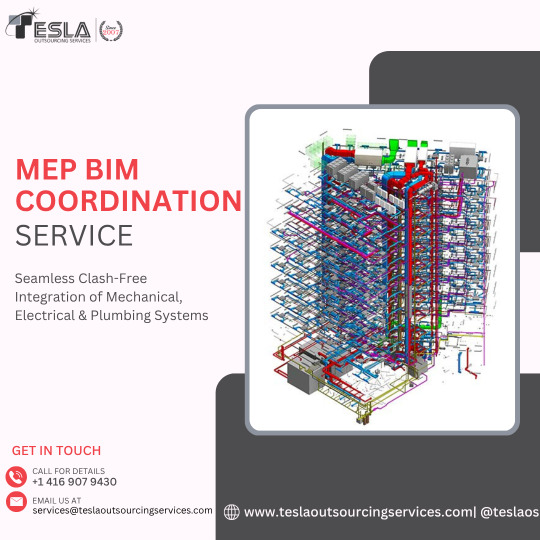
🔧 Accelerate your Project Timeline with Expert BIM Coordination
In today’s complex construction projects, seamless coordination between Mechanical, Electrical, and Plumbing (MEP) systems is non-negotiable. At Tesla Outsourcing Services, we specialize in MEP BIM Coordination that eliminates clashes, enhances constructability, and accelerates project timelines.
🚧 Our Expertise Includes: ✔️ End-to-end clash detection and resolution using REVIT MEP Coordination and other technology. ✔️ Coordination-ready LOD 300–500 models ✔️ Integration across Architectural, Structural, and MEP disciplines ✔️ Strict adherence to industry standards (ISO 19650, BS 1192, PAS 1192, & more)
📊 Whether you are managing hospitals, commercial complexes, airports, or residential towers — our models ensure spatial accuracy and construction efficiency.
💡 Collaborate with a team trusted for over 17 years across the USA, UK, Europe, and Australia.
🔗 Let us build smarter, safer, and faster—together.
📩 Reach out at [email protected]
🌐 Explore more here.
0 notes